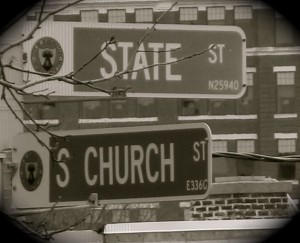
Laura Ferstl asked me to post this blog from the mission trip that the Officeof Missions and the Office of Young Adult Ministry is sponsoring. Laura wrote this morning from the city of San Rafael in the Mendoza province of Argentina. I am here for a second year in a row as part of the Annual Young Adult Mission Trip which is a collaboration between the Archdiocesan Office of Young Adult Ministry and the Pontifical Missions Office.
We are here to serve in the “City of Charity” run by the Religious Family of the Incarnate Word. The City of Charity began in the early 1990s thanks to the dedication of Father Carlos Miguel Buela (the founder of the Institute) and Father Raul Harriague. Currently, it is comprised of five homes for children, teenaged boys, teenaged girls, mental and physically handicapped men, and mentally and physically handicapped women. They have come to the homes because of abuse, abandonment, broken families, or economic hardship. More than just housing, food, and education, they receive the love of the priests, sisters, and volunteers who make up this Religious Family.
Then the righteous will answer him and say, ‘Lord, when did we see you hungry and feed you, or thirsty and give you drink? When did we see you a stranger and welcome you, or naked and clothe you? When did we see you ill or in prison, and visit you?’
And the king will say to them in reply, ‘Amen, I say to you, whatever you did for one of these least brothers of mine, you did for me.’
Matthew 25:37-40
At the close of each day, the missionaries have been sharing with each other where we saw the face of Christ that day. I want to share a few of our reflections to give you a taste of the blessings we´ve experienced so far.
We´ve seen the face of Christ in the priest who, with the gift of his paternal instinct, feeds a mentally handicapped man in his forties who can´t feed himself while lovingly speaking with a younger mentally handicapped boy who has just had a fit, inviting him to behave better.
We´ve seen the face of Christ in the 12-year-old boy who was both malnourished and starved for physical touch when he was younger and constantly hugs us, holds our hands, sits close to us or on our laps, and invites us to love him selflessly.
We´ve seen the face of Christ in the sister who sits quietly with a physically handicapped man in a wheeled chair, swatting away the flies that land on his face since he can´t do it himself.
We´ve seen the face of Christ in the young boy who, as we paint the cement walls of the dining room, enthusiastically pays us a compliment just when we need it.
We´ve seen the face of Christ in the mentally and physically handicapped middle-aged woman who comes to greet us with a kiss leaving a trail of saliva, and in whose eyes we can see a perfect soul.
We´ve seen the face of Christ in one of our fellow missionaries whose face lights up each time the curious little girls come by to say hello, making known to them that they are loved.
And we´ve seen the face of Christ in His beautiful creation here in Argentina: the summertime flowers, the vineyards, the mountains, the streams and rivers, the animals, and the clear blue sky.
We are half way through our time here, and I am sure that Christ will continue to be present to us each day. Please pray for the fruits of this mission trip! God bless!



